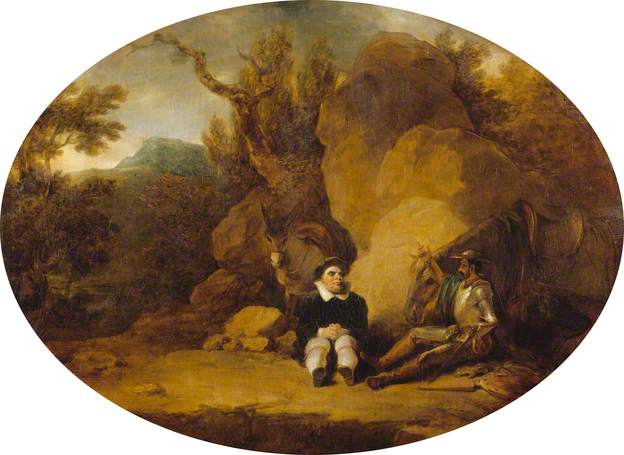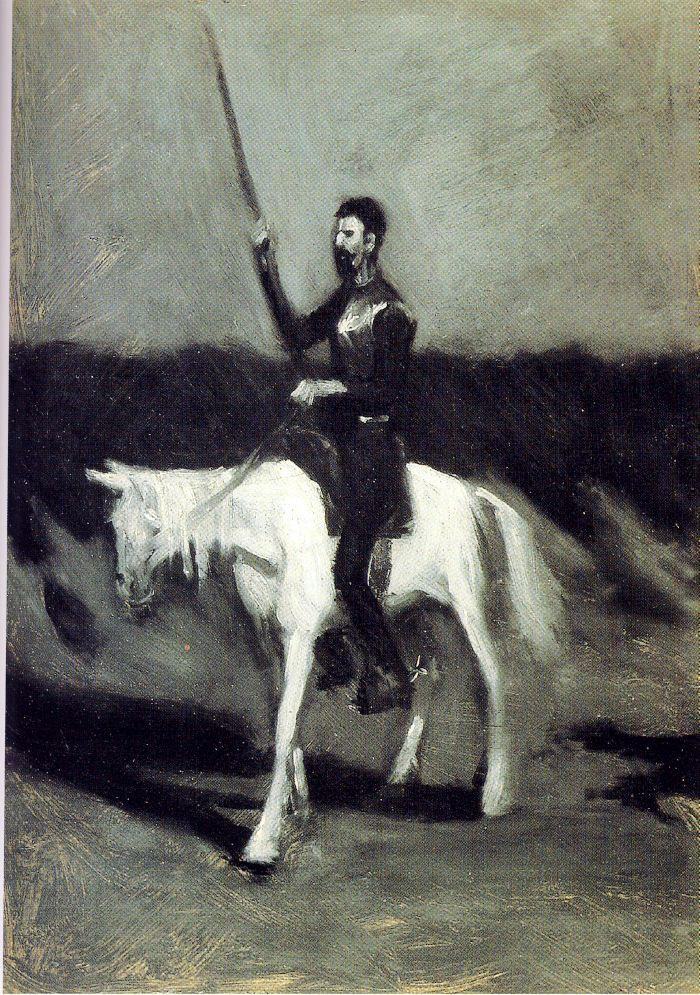It was this sudden shift, from one generation of Spanish life, from heroic tension to empty disillusion, that was also the background to Miguel de Cervantes own life, which formed the background to Don Quixote. …
Cervantes, in a sense, fell between the two generations, sharing the moods of both. Born in 1547, in the reign of Charles V, he was brought up in Spain by an old Erasmian teacher who still breathed the confident, liberal air of imperial times; and then, as a young man, he went to Italy and was intoxicated by the ebullience, the vitality of Italian life. He read Ariosto, the poet of gaiety, chivalry, and enchanted romance. he enlisted as a soldier, fought and lost his left hand in Don John’s great, victorious battle of Lepanto, served in the campaign against Tunis and Goletta, and in 1575 set sail, full of honor and pride, and with letters of reccomendation from Don John and the Spanish governor in his pocket, for Spain, promotion, and further glory.
Cervantes was a hero, a self-conscious hero, living fully and investing heavily in that ( as he was to discover) lest twilight of the heroic age. Nor did his heroism end there. On his way home, off the coast of France, his ship was captured by Algerian corsairs. Seeing his letters of recommendation, the pirates presumed him to be a man of mark who would command a high ransom. Cervantes was taken to Algiers and there remained for more than five years, a prisoner and a galley slave.
In his captivity at Algiers, Cervantes continued his heroic exploits. He never forgot them. Long afterward, in Don Quixote, he recalled them. There, a captive escaped from the Moorish galleys, meets Don Quixote and tells the story of his captivity. In it he refers to a fellow captive “called something-de-Saavedra” ( Cervantes full name was Miguel de Cervantes Saavedra), who achieved such a personal ascendency over the Moorish governor that although:
“Only one Spanish soldier, called such a one of Saavedra, was in his good grace, who although he did sundry things that will remain in the memory of that nation for many years, and all to the end to get his liberty, yet he never struck him, nor commanded him to be stricken, nor said as much as an evil word unto him; and yet we all feared that he should be broached on a stake for the least of many things which he did, and himself did also dread it more than once; and if it were not that time denieth me leisure to do it, I would recount unto you things done by this soldier, which might both entertain and astonish you much more than the relation of my life.”







 COMMENTS
COMMENTS